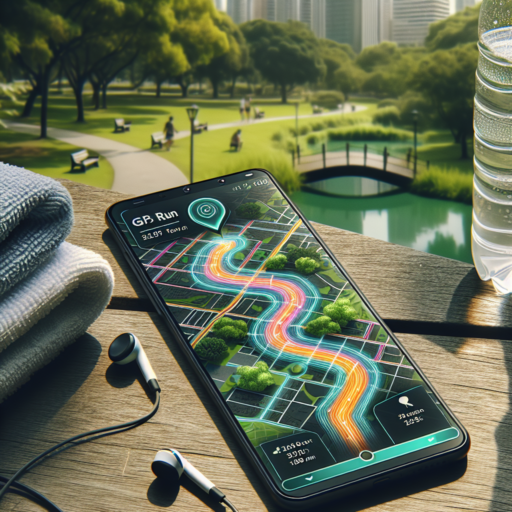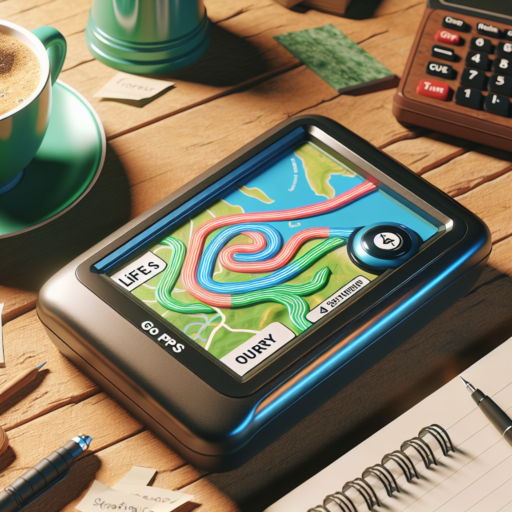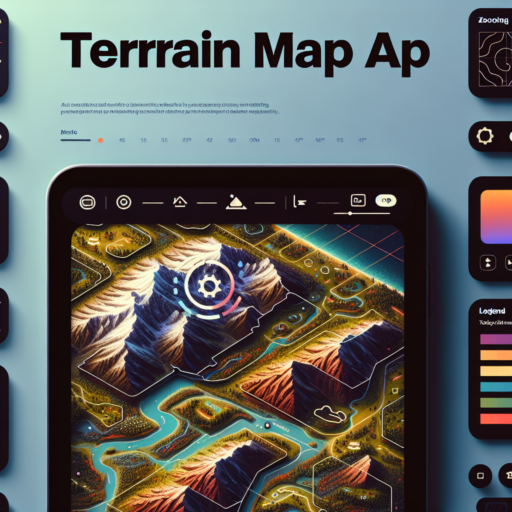No se han encontrado productos.
What is GPS Run Technology and How Does It Work?
GPS run technology, specifically designed for athletes and fitness enthusiasts, is a sophisticated system that leverages the Global Positioning System to monitor and analyze running performance. At its core, this technology employs a network of satellites orbiting the Earth to precisely determine your location and track your movements in real-time. This allows runners to gain insightful details such as distance covered, pace, elevation gain, and route taken.
Components and Functioning
Utilizing a combination of hardware and software, GPS run technology operates by connecting a receiver, usually found in smartwatches or fitness trackers, with at least four satellites. The receiver calculates its distance from these satellites by measuring the time it takes for a signal to reach from each satellite to the receiver. Through this method, known as trilateration, the exact position of the runner is pinpointed with remarkable accuracy. Furthermore, as you move, the device continually updates your position, thereby tracking the trajectory of your run.
Advantages for Runners
Personalized Training Insights: One of the most significant benefits of GPS run technology is the ability to access detailed metrics about your running sessions. This not only includes basic stats like speed and distance but also more complex data such as cadence (steps per minute) and stride length. This wealth of information is crucial for runners looking to optimize their performance and achieve specific fitness goals.
Navigation and Safety: For those adventurous souls venturing into new or complex routes, GPS run technology offers navigational guidance, helping to prevent one from getting lost. Additionally, some devices come equipped with safety features, such as location sharing, which can be invaluable in case of an emergency.
GPS run technology has fundamentally transformed the experience of running, making it more measurable, enjoyable, and safe. By providing data-driven insights and simplifying the process of tracking running performance, this innovation encourages runners to push their limits and achieve new personal bests.
The Top Benefits of Using GPS Run in Your Training
Integrating GPS technology into your training regimen presents a myriad of advantages aimed at enhancing your performance and understanding of your fitness journey. The evolution of GPS run systems has made it easier for athletes and fitness enthusiasts to track and analyze every step of their workout effortlessly.
Improved Accuracy in Distance and Pace Measurement
One of the primary benefits of utilizing GPS run technology is the significant improvement in measuring your running distance and pace with high accuracy. Traditional methods of tracking distance, such as using a pedometer or estimating based on time, cannot match the precise data provided by GPS technology. This accuracy allows you to monitor your progress with exactitude, enabling a more focused and efficient training approach.
Real-Time Performance Feedback
GPS run devices provide real-time feedback on your performance, giving you the instant data needed to adjust your pace or route on the go. This immediate feedback loop keeps you informed about your speed, distance covered, and even elevation changes throughout your run. The ability to see these metrics in real-time empowers you to make tactical decisions that can improve your training outcomes on the spot, rather than after the fact.
Enhanced Motivation and Goal Setting
The psychological aspect of training with GPS run technology cannot be underestimated. Having quantitative goals and seeing real-time progress toward achieving them can significantly boost your motivation. Setting goals based on the detailed metrics provided by your GPS device makes your training objectives clear and attainable, further inspiring you to push your limits. Monitoring your improvement over time, through the accumulation of data, encourages a sustained commitment to your training regimen.
How to Choose the Best GPS Running Watch for Your Needs
When considering the vast options available for GPS running watches, it’s crucial to focus on features that align with your specific training goals and lifestyle. Individuals have varied expectations from their devices, ranging from basic distance and pace tracking to advanced metrics like heart rate variability, VO2 max estimations, and even navigational capabilities. To ensure you choose the best GPS running watch that suits your needs, begin by assessing your primary goals as a runner. Are you aiming to improve your personal best, venturing into ultramarathon distances, or simply looking to stay active? Your answer to this will significantly narrow down your search.
Next, consider the usability and design of the GPS running watch. A user-friendly interface can greatly enhance your daily interactions with the device, making it easier to access your data and utilize its features effectively. For those who prefer long training sessions or multiday adventures, battery life becomes a key factor. Some of the best GPS running watches offer extensive battery life, but this often comes at the expense of a larger, potentially bulkier, design.
Lastly, don’t overlook the importance of connectivity and the ecosystem. Most GPS running watches seamlessly sync with various online platforms and applications, allowing you to analyze your performance, set training plans, and share your achievements with a community. Compatibility with your smartphone and other devices also facilitates a more integrated fitness and lifestyle approach. By carefully considering these aspects, you can select a GPS running watch that not only meets your athletic needs but also complements your daily life.
Improving Your Running Performance with GPS Run Insights
In the quest to enhance running performance, GPS run insights stand out as a revolutionary tool. By harnessing the power of these insights, runners can gain an unparalleled understanding of their performance metrics. This technology offers real-time feedback on pace, distance, elevation, and more, enabling athletes to make immediate adjustments for optimizing their training.
Moreover, GPS run insights play a crucial role in setting and achieving personalized running goals. Whether aiming to increase speed, endurance, or overall fitness, the detailed data provided helps in tailoring training plans with precision. It breaks down each run into actionable insights, identifying areas of strength and opportunities for improvement. This personalized approach ensures that runners can focus their efforts more effectively, achieving better results faster.
Additionally, the integration of GPS run insights with other health metrics offers a comprehensive overview of an athlete’s physical condition. By analyzing data on heart rate, cadence, and recovery alongside GPS metrics, runners can get a holistic view of their performance and well-being. This enables them to adjust not only their running routines but also their rest periods and nutrition, leading to optimal performance and reduced risk of injury.
Integrating GPS Run Data with Popular Running Apps
Integrating GPS run data into popular running apps has become a game-changer for avid runners and fitness enthusiasts. This seamless connection allows users to track their running progress in real-time, offering insights into their performance, speed, and distance covered. Many top-tier running apps now support this feature, making it easier for runners to monitor their progress, set realistic goals, and improve their running experience.
Understanding the Synchronization Process is crucial for maximizing the benefits of this technology. Typically, the integration works through Bluetooth or Wi-Fi, where the GPS device captures the run data, which is then synchronized with the user’s chosen running app. This process allows for an accurate depiction of the run, charting out not just the route taken but also highlighting areas of speed variance, elevation changes, and more. Such detailed insights are invaluable for tailoring training sessions to fit personal goals and challenges.
Compatibility and user experience are key factors that users should consider when linking their GPS run data with running apps. Most popular apps offer easy-to-follow steps for integration, ensuring that even the most technologically averse individuals can connect their devices and start analyzing their run data. This seamless integration not only enhances the user experience by providing a central platform for all running data but also motivates runners to push their limits by setting higher benchmarks for themselves.
GPS Run Accuracy: Understanding and Overcoming Limitations
When it comes to tracking fitness activities, GPS technology has become an indispensable tool for runners worldwide. Despite its widespread use, understanding and overcoming the limitations of GPS run accuracy is crucial for athletes striving for precise performance data. Factors such as signal interference, device quality, and environmental elements can significantly impact the accuracy of GPS data. By delving into these challenges, runners can better interpret their GPS data and adjust their training accordingly.
Identifying Common GPS Signal Interference Sources
One of the first steps in improving GPS run accuracy is identifying the common sources of signal interference. Buildings, trees, and even atmospheric conditions can deflect GPS signals, leading to inaccuracies in distance and pace readings. Urban areas, in particular, are notorious for the «urban canyon» effect, where tall buildings block satellite signals, causing sporadic connections. Recognizing the environments that may affect GPS accuracy enables runners to plan routes that minimize these disruptions, ensuring more reliable data tracking.
Optimizing GPS Data with Device Settings and Techniques
- Updating software regularly: Manufacturers often release updates that enhance GPS accuracy.
- Starting your activity in an open area: This reduces initial signal interference, allowing the device to lock onto satellites more effectively.
- Maintaining a steady pace: Frequent pace changes can confuse GPS devices, leading to less accurate data collection.
Understanding the limitations of GPS technology in tracking running activities is essential for runners dedicated to obtaining accurate performance data. By acknowledging and adjusting to these limitations, athletes can enhance the reliability of their GPS data, leading to more informed training decisions. The journey to mastering GPS run accuracy is ongoing, but with the right knowledge and strategies, overcoming these challenges is within reach.
Training Plans and Tips for Beginners Using GPS Run
Embarking on a running journey can be incredibly exhilarating, especially when you have the right tools and guidance at your disposal. For beginners, integrating a GPS run tracking app into your training plan can be a game-changer. These applications not only help in mapping your route but also provide insightful data on your pace, distance, and progress over time. This integration of technology can significantly enhance the effectiveness of your workout by providing a tangible way to measure improvements and set realistic goals.
Setting Achievable Goals with GPS Data
One of the first steps in creating a training plan is to set achievable goals. By using a GPS run tracker, beginners can start by setting small, attainable milestones based on distance or time. For instance, aim to increase your running distance by 10% each week. This incremental approach ensures steady progress while minimizing the risk of injury. The immediate feedback from your GPS device or app can be incredibly motivating, as it visualizes your progress in real-time, pushing you to gradually extend your capabilities.
Understanding and Analyzing Your Running Data
As a beginner, it might be tempting to overlook the wealth of data your GPS device provides. However, taking the time to understand and analyze this information is crucial. Focus on key metrics such as pace, elevation gain, and heart rate, which are essential for identifying patterns and areas for improvement. This data can guide your training intensity and help in tailoring your sessions to target specific goals, whether it’s to increase speed, build endurance, or improve running form. Additionally, many GPS run trackers offer personalized training tips and insights based on your performance data, making it an invaluable resource for novice runners.
Incorporating Variety into Your Runs
Finally, to keep your training plan engaging and effective, it’s important to incorporate a variety of runs into your routine. Use your GPS run tracker to explore new routes, which can help keep the excitement alive and prevent monotony. Integrating different types of runs, such as long runs, interval training, and recovery runs, can further enhance your endurance and strength. Each type of run serves a specific purpose and contributes to your overall running performance, making variety a key component of a successful training plan.
Maximizing Battery Life on Your GPS Running Device
Maintaining the longevity of your GPS running device’s battery is crucial for athletes and recreational runners alike. Understanding how to optimize the battery life of your device can ensure that it remains a reliable companion on your longest runs. Implementing a few strategies and adjustments can make a significant difference in how frequently you need to charge your device.
Adjusting Your Device’s Settings
Smart management of your device’s settings plays a pivotal role in extending its battery life. Consider dimming the backlight or setting it to ‘Auto’ mode, which adjusts brightness based on ambient light and can drastically reduce power consumption. Additionally, limiting notifications and alerts to only the essential ones can conserve battery, as each alert can light up the screen and demand processing power, incrementally draining the battery.
GPS Settings Optimization
The GPS functionality, while the most critical, is also the most demanding on the battery. Utilizing the ‘Battery Saving’ GPS mode, if your device offers it, can extend the battery life significantly by reducing the GPS refresh rate. This mode can be particularly useful during long training sessions or races where you need just enough accuracy for tracking your distance and pace. Remember that reducing the GPS accuracy may affect the precision of data like pace and distance, so balance your needs accordingly.
Regular updates to your device’s software can also lead to improved battery performance. Manufacturers often release updates that optimize the battery usage and improve the efficiency of the GPS. Ensuring your device is up to date can sometimes offer a simple yet effective boost in extending its battery life.
Comparative Analysis: GPS Run Watches vs. Smartphone Apps
When it comes to tracking your running metrics, the choice between using a GPS run watch and a smartphone app can significantly impact your training quality and convenience. Each option has its unique set of features that cater to different types of runners. Exploring the advantages and limitations of both helps determine which tool aligns best with your running goals and lifestyle.
Accuracy and Reliability
GPS run watches are often celebrated for their accuracy in tracking distance and pace. Equipped with dedicated GPS technology, these watches provide real-time data that is crucial for serious runners focused on improving their performance. On the other hand, smartphone apps rely on the phone’s built-in GPS, which might not be as accurate, especially in areas with weak GPS signals.
User Experience and Accessibility
Smartphone apps edge out GPS watches in terms of accessibility. With your smartphone generally always at your side, it’s easy to start tracking your run without needing additional equipment. Many apps also offer a user-friendly interface and the ability to play music or answer calls during your run. However, the convenience of a GPS run watch lies in its wearability and the fact that it’s specifically designed for runners, offering a more streamlined and focused user experience without the distractions present in a smartphone.
In comparing GPS run watches and smartphone apps, it’s evident that each has its strengths and weaknesses. Evaluating these factors against your personal running habits and preferences is key to choosing the right technology to support your training journey.
Real-Life Success Stories: Transformations Achieved Through GPS Run Training
The world of fitness is replete with transformative stories that not only inspire but also showcase the power of dedication mixed with the right technological assistance. Among the most compelling of these narratives are those born from the integration of GPS run training into regular fitness routines. This sophisticated yet accessible technology has enabled countless individuals to push their boundaries, turning their aspirations into tangible achievements.
GPS run training is more than just a digital coach; it’s a comprehensive companion that offers real-time feedback, detailed performance analytics, and personalized training programs. This technology has been instrumental in helping runners of all levels monitor their progress, fine-tune their strategies, and achieve goals they once deemed unreachable. From shedding those stubborn pounds to completing marathons, the stories of transformation are both diverse and profound.
Key Features That Fuel Achievements
At the heart of these success stories are several key features of GPS run training systems. Real-time tracking enables runners to see their pace, distance, and time, instilling a sense of accountability and motivation. Personalized training plans, tailored to each runner’s unique goals and capabilities, guide users through each step of their journey. Furthermore, the ability to share successes and challenges with a community provides a level of support that is invaluable on the path to transformation.




